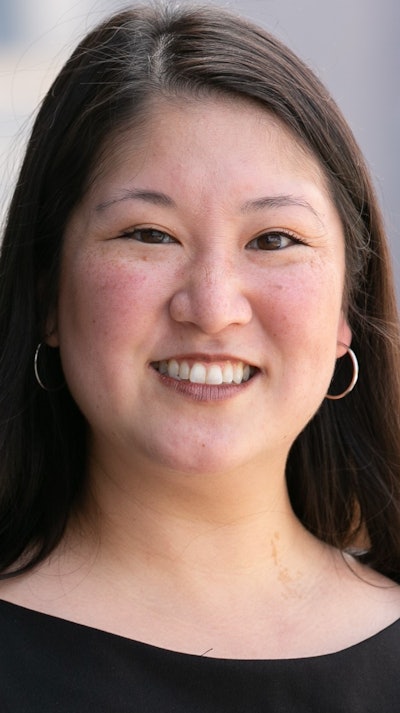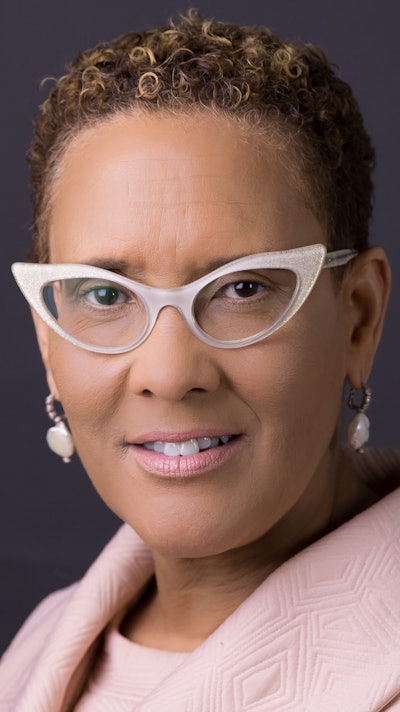Higher education leaders say the pandemic has changed how institutions handle faculty recruitment. Zoom interviews or other virtual connections have become commonplace. The desire to build more diverse faculties has grown over the past two-and-a-half years as colleges and universities have come to understand the need to connect with students who have felt disconnected and to bring more complex and inclusive thought to higher education.
 Dr. Lisa Hanasono
Dr. Lisa Hanasono
“From mentoring and campuswide affinity groups to faculty development training with pathway programs and equitable workload policies, colleges and universities can explore how they are creating and sustaining cultures and climates that attract and support the success of minoritized faculty,” Hanasono says.
Recruitment strategies
“Institutions might consider how they are proactively recruiting job candidates,” says Hanasono. “Colleges and universities can create job ads that go beyond basic templated language. Instead of simply informing the public about a job opening, we can transform a job ad into a strategic recruitment tool that aims to persuade candidates to apply.”
St. Francis College in Brooklyn, New York, has recently moved to a new campus. Dr. Jennifer Lancaster, vice president for academic affairs and academic dean, says transforming the campus involves more than just the new location and cutting edge technology.
“There’s a lot of flexibility and technology-enhanced learning, which I think is attractive to many new faculty members,” says Lancaster. “When we explain our overall learning strategy and the different modalities that we offer courses in, the ability to form new courses and new programs entices applicants.”
The ability to do some interviews via Zoom has proven quite cost-effective. St. Francis also utilizes a platform on which applicants record their answers to a series of questions and upload the video. Then the top two or three candidates are brought to campus for in-person interviews.
Heidi L. Foster-Cho, human resource director for academic affairs at Sacred Heart University in Connecticut, says the university continues to do initial screening interviews virtually because they’re easier to coordinate and make financial sense. Final candidates are brought to campus. Not only do these candidates have meetings and tour campus, they also guest lecture a class so the hiring committee gets a feel for how an individual is in the classroom.
Recruiting strategies at Sacred Heart reflect the desire to increase faculty diversity. In addition to posting positions on the university’s website and with higher education publications, Foster-Cho encourages search committees to reach out to minority-serving institutions.
“I encourage them to reach out to colleagues they may know in the field who may have taught students who now have a Ph.D. and are ready for a career as a faculty member,” says Foster-Cho.
Since joining St. Francis in 2021, Dr. Jeanne Arnold, chief diversity, equity and inclusion officer and chief of staff, has implemented a training program for faculty search committees.
“It covers everything from how you write the ad, developing the recruitment plan, being proactive, not just placing ads but also reaching out to schools or places that are producing the folks that we want,” says Arnold. “We require them to develop rubrics so that the evaluation is consistent and objective.”
Dr. Catherine Chan, assistant vice provost for high impact practices at the University of Wisconsin-Madison, says the dissemination of position vacancy listings involves thinking about different and non-conventional ways of reaching candidates. “Folks are now leveraging other avenues, including networks that are established by professional organizations or even professional conferences to reach out to … people from more diverse backgrounds when there is a viable, diverse pool to consider,” she says.
Sometimes, says Chan, deans will attend conferences to establish relationships that they can later call upon. Hosting events for diverse candidates on campus had increased prior to the pandemic. Since then, schools have had to adapt and innovate, sometimes hosting virtual informational sessions.
Institutional commitment
Foster-Cho meets with all faculty search committees in the early stages of the search and conducts training around how to build the search pool and keep implicit biases out. She encourages them to reach out and not be satisfied with only the people responding to ad postings.
 Dr. Jeanne Arnold
Dr. Jeanne Arnold
NCFDD’s mission is to change the face of power in the academy. The organization currently works with over 300 colleges and universities on best practices as well as thousands of individuals seeking professional development. Hanasono says while facilitating a faculty development workshop for Black and Latinx scholars in STEM, several participants said they looked at whether an institution sought inclusive resources, such as NCFDD.
Hanasono agrees with practices such as building partnerships with professional organizations and institutions that serve minoritized scholars. “I believe that faculty recruitment is deeply connected to processes, policies, practices and resources related to faculty retention and career advancement,” she says.
“Job candidates often are attracted to institutions of higher education where they feel welcomed, are valued and know they can advance their careers,” she adds. “Finding ways to strategically align recruitment, retention and career advancement efforts can help colleges and universities build greater faculty diversity.”
St. Francis College’s efforts to recruit more diverse faculty have accelerated since 2020. This includes developing its own pipeline from within the college’s diverse student body by drawing students toward graduate school. That is among the priorities in the college’s STEM Resource Center.
“I have introduced in a pilot with the [president’s] cabinet, a personal professional development tool around cultural competence, the intercultural development inventory,” says Arnold. “It’s a personal survey that people take. Based on the information they put in, they’ll get a feedback report on where they are in their own cultural competence development.
“It also provides a plan for how you can expose yourself to different things and engage in different activities to move yourself along that scale,” she continues. “It can really give a person insight and help them be more effective in the classroom, with their colleagues and in searches.”
Support systems
“We believe institutions are part of the change by continually evaluating how they support their diverse faculty members on professional and personal levels,” says Hanasono. “The pandemic exacerbated many inequities in academia, and there remains an urgent and important need to continue to intentionally, proactively and inclusively recruit and support minoritized graduate students, postdocs, faculty and administrators.”
Technological savvy has become increasingly important for new faculty. Lancaster says St. Francis wants individuals who have at least some experience infusing technology into their pedagogy. They do not have to be completely proficient but do need to be comfortable learning.
Chan notes lack of technical skills can be a disadvantage given the current trend toward hybrid and online learning, and the job description needs to be explicit. This would include the types of courses a faculty member is expected to teach.
“That has to do with faculty retention because higher ed institutions now need to pay attention to the support once the faculty members are hired and for those who are already in place,” says Chan. “There needs to be additional attention paid to faculty members … because the needs of the students and of the institutions have changed.
“Making sure everyone has the tools to use virtual platforms,” she adds. “As well as having someone on site in real time to offer technological support is important.”
To keep faculty on track for tenure, St. Francis has pre-tenure review when faculty are in their third year. There will be meetings and evaluations of where administration think the faculty members are in terms of the portfolio process. There is also a post-tenure review process every five years. In any given year, those facing post-tenure evaluation are able to form a peer group called the faculty evaluation and enrichment committee that meets, attends each other’s classes and writes a collective report about their experiences as well as making suggestions for faculty workshops.
“As we continue to diversify our faculty body as a whole that will be an increasingly better process for retaining all of our faculty post-tenure,” says Lancaster.
Arnold says there needs to be a comprehensive climate survey of faculty, staff and students. St. Francis began a climate study on Sept. 20 for which outside consultants have been retained.





















